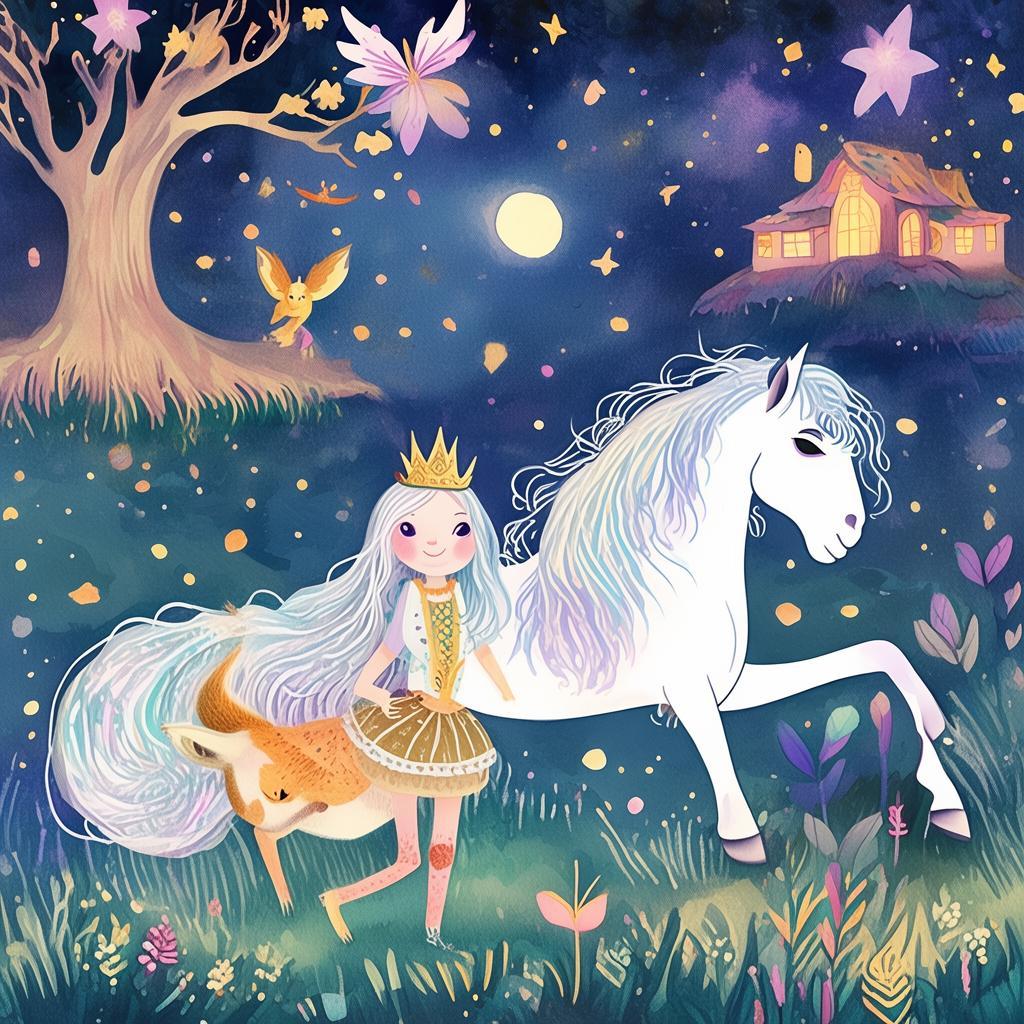The Whispering Weeds of Wailing Lake
In the heart of the ancient Chinese village of Lingmo, nestled between towering mountains and a serene lake, there was a place shrouded in mystery and whispered about in hushed tones. The Wailing Lake was said to be a reservoir of emotional waters, where the tears and sorrows of the villagers gathered, echoing through the night like a haunting melody.
Ling, a curious and adventurous girl with a penchant for the unknown, had always been fascinated by the tales her grandmother told her about the lake. One crisp autumn morning, while exploring the forest that bordered the lake, she stumbled upon a peculiar sight. Amidst the lush greenery, she noticed a patch of withered weeds, their leaves weeping tears of a darker hue.
Intrigued, Ling approached the weeds, her fingers brushing against their wilted stems. To her astonishment, the weeds began to whisper, their voices a mix of sorrow and longing. She strained to hear, and what she heard was a tale of old, one that had been forgotten by time.
The tale began with the founding of Lingmo, a village built on the banks of the Wailing Lake. It was said that the lake was a sacred place, a place where the spirits of the departed could find peace. However, the villagers soon discovered that the lake had a dark side. As their sorrows and fears were cast into the water, the lake began to reflect their emotions, and the weeping weeds grew from the depths.

The villagers, driven by fear and superstition, sought to rid the lake of its curse. They built a temple and performed rituals, but the weeping weeds only grew stronger. It was then that the village elder, a wise and ancient man named Su Xin Hao, stepped forward with a plan.
Su Xin Hao explained that the weeping weeds were not a curse but a warning. They were a manifestation of the villagers' inner turmoil and their need to confront their fears. He proposed a radical idea: to build a bridge of understanding and empathy between the living and the dead, a bridge that would allow the spirits of the departed to find peace and the living to heal their emotional wounds.
As Ling listened to the tale, she realized that the bridge Su Xin Hao spoke of was not just a physical structure but a metaphor for the emotional connections between people. It was a reminder that the healing of one's soul required the courage to face one's innermost fears and the compassion to understand others.
Determined to uncover the truth behind the weeping weeds, Ling began her own quest. She spoke to her grandmother, who revealed that Su Xin Hao had once lived in the village, but he had vanished without a trace. She also mentioned that the temple at the lake had been abandoned for years, and the rituals had ceased.
Ling set out to find the temple, her heart filled with determination. Along the way, she encountered various challenges, including a storm that threatened to sweep her away and a forest spirit that wanted nothing more than to keep her from her quest. But Ling's resolve never wavered.
Finally, she reached the temple, its ancient stones weathered by time. Inside, she found a hidden chamber, and within it, a mirror that reflected the true nature of her village. The mirror showed her the weeping weeds, but it also showed the faces of the villagers, their eyes filled with fear and sorrow.
Realizing that she was not alone in her quest, Ling returned to the village, determined to rebuild the bridge that Su Xin Hao had envisioned. She gathered the villagers and shared the tale of the weeping weeds and the bridge of understanding.
At first, the villagers were hesitant, their fear and superstition preventing them from seeing the truth. But as Ling shared her own fears and vulnerabilities, they began to open up. They shared their own stories, their own sorrows, and slowly, the barriers of misunderstanding and fear began to crumble.
The villagers worked together to rebuild the temple and perform the rituals, but this time, with a new understanding and a heart full of empathy. The weeping weeds, no longer a source of fear, became a symbol of the village's healing journey.
As the first rain of the season fell, the weeping weeds began to thrive once more, their leaves no longer filled with sorrow but with the promise of new beginnings. The villagers of Lingmo learned that the true power of the Wailing Lake lay not in its ability to hold onto their fears but in its ability to release them, allowing them to move forward with their lives.
Ling stood by the lake, watching the weeping weeds sway gently in the breeze. She knew that the bridge of understanding had been built, not just between the living and the dead but between the villagers themselves. The Wailing Lake had become a place of healing and peace, a testament to the power of empathy and the courage to confront one's fears.
And so, the tale of the weeping weeds of Wailing Lake lived on, a story of transformation and redemption, a reminder that the waters of emotion, when faced with understanding and compassion, could flow into a river of hope and healing.
✨ Original Statement ✨
All articles published on this website (including but not limited to text, images, videos, and other content) are original or authorized for reposting and are protected by relevant laws. Without the explicit written permission of this website, no individual or organization may copy, modify, repost, or use the content for commercial purposes.
If you need to quote or cooperate, please contact this site for authorization. We reserve the right to pursue legal responsibility for any unauthorized use.
Hereby declared.









